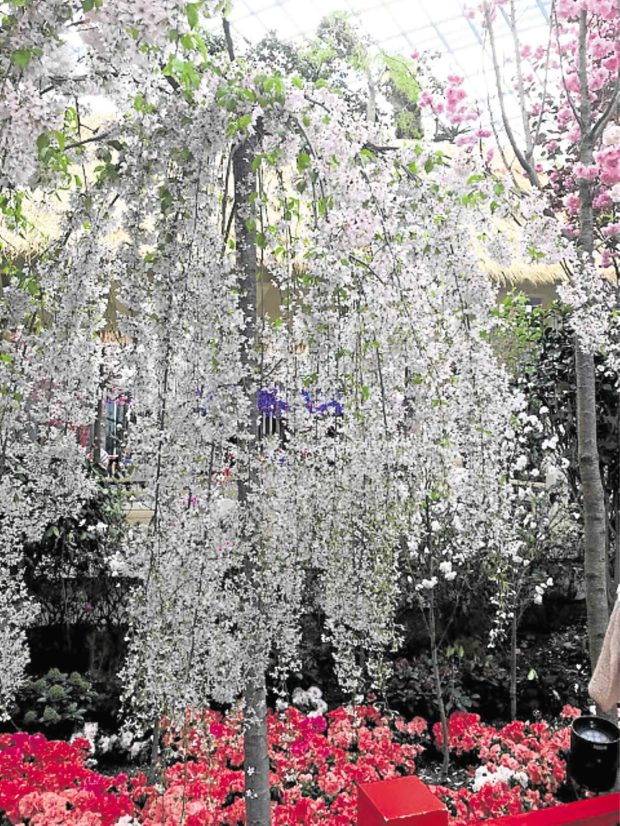
It seemed the heavens had opened and sprinkled magic in Singapore—a fountain of pristine white flowers, a spray of pink blossoms, and petals of red, orange and crimson clustered in a bush. Have cherry blossoms ever been as beautiful?
Considered the unofficial national flower of Japan, cherry blossoms or sakura, as they’re called, also bloom in the temperate regions of the Northern Hemisphere—Korea, the United States and the Netherlands, for instance. But perhaps the only tropical country where one can see an extensive variety of them, in all their glorious splendor, is Singapore.
At Gardens by the Bay in Singapore’s Central Region, under the controlled temperature of the Flower Dome, more than 20 species of cherry blossoms bloomed in radiant colors the whole month of March.
Belonging to the rose family (rosaceae), the species includes the more common Yoshino cherry or Somei Yoshino, with a single layer of five petals; the semi-double sakura with 10 to 20 petals; the double flowers, 25 to 50 petals; and the extraordinary kikuzakura, or chrysanthemum cherry, with over 100 petals in each flower.
Gaudy
As intricate as they seem, and according to information displayed in the exhibit, the sakura with multiple layers of petals are considered gaudy by the Japanese. They prefer the simplicity and more delicate beauty of the Somei Yoshino, whose five pale pink petals are arranged in a single layer.
Cherry blossom petals also vary in shape, as I discovered while strolling around the garden. Some petals are oval, with slightly pointed tips, others rounder, and still others have edges outlined with a different color, as if for emphasis.
There were blossoms with tightly clustered petals, others with wavy patterns, and some looking flirtatious with their frilly edges, like young girls in petticoats.

Their extensive variety of colors range from hues of frothy pink to the brighter fuchsia, from luminous white to lustrous purple and the bolder colors of red, orange and crimson.
Some blossoms, in fact, change color as they transform from buds to full bloom. A bud can start life by being dark pink, then metamorphose into lighter pink, and finally blossom into pale pink or white when fully open.
Spring
Perhaps because cherry blossoms are associated with spring, they’re like a clarion call to the Japanese, bidding families to celebrate and hold picnics under branches drooping with flowers or to pose for posterity beside their dazzling beauty.
So important are cherry blossoms in the life of the people that the Japan Meteorological Corp. (JMC) tracks their blooming, to inform the public of the best viewing times and places. They often bloom first in places with milder temperatures, such as in the south, while the colder northern regions, such as Hokkaido, get a later bloom.
Although cherry blossoms may no longer be on display in Singapore, one can still see them in Japan, perhaps until mid or late April and even until early May in the northern regions, according to JMC.
More than flowers of beauty, cherry blossoms also signify a number of things. Because they bloom at the start of both the fiscal year and the school year in Japan, these evanescent flowers are regarded as harbingers of hope and new beginnings.
With their beauty being so ethereal, lasting only about one to two weeks, cherry blossoms are also seen as a symbol of the impermanence of life. Their beauty may dazzle today, but when the wind whips and the rain falls, the flowers flutter away, leaving their branches bare and desolate.
Still, they return, year after year, as surely as winter turns to spring, to enchant us once more, and to remind us of the continuing seasons of nature and the never-ending cycle of life.

